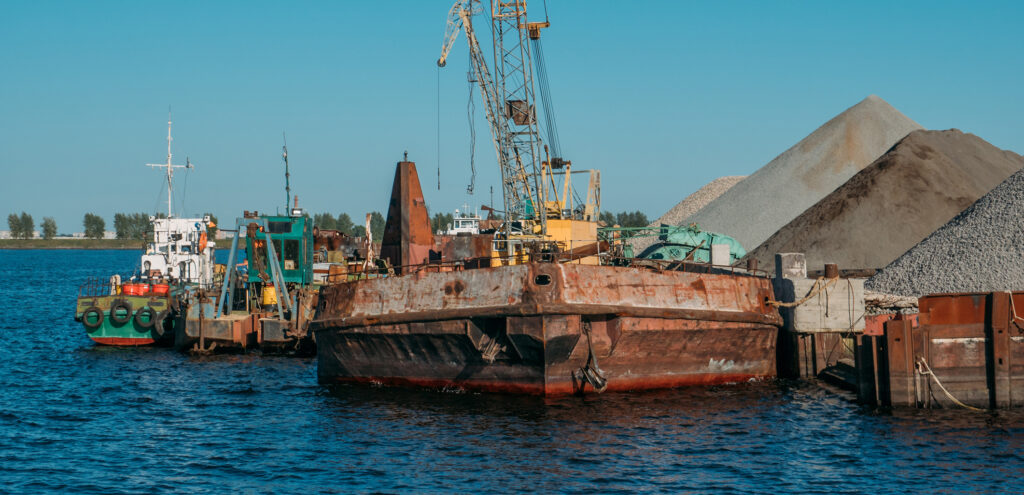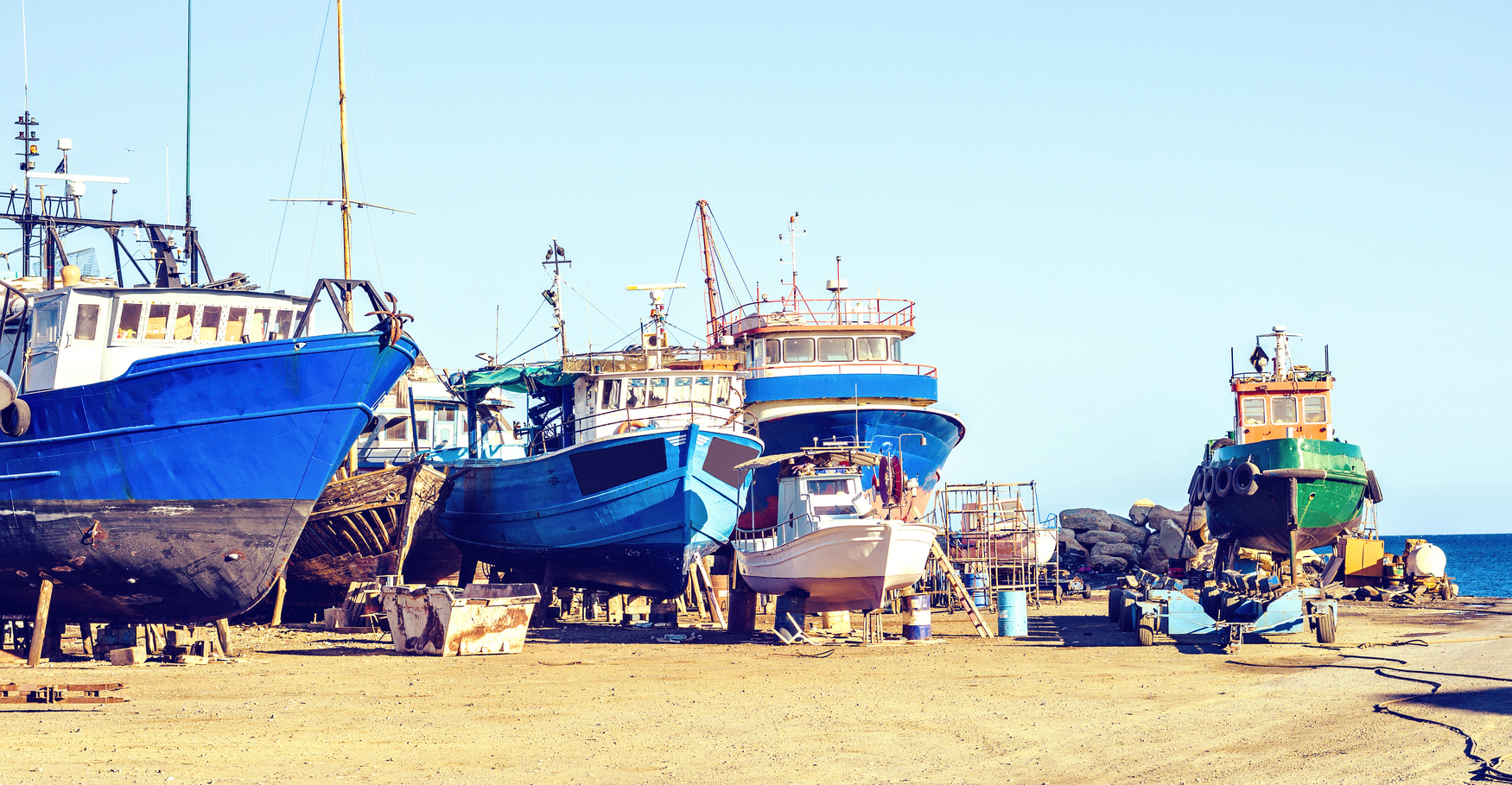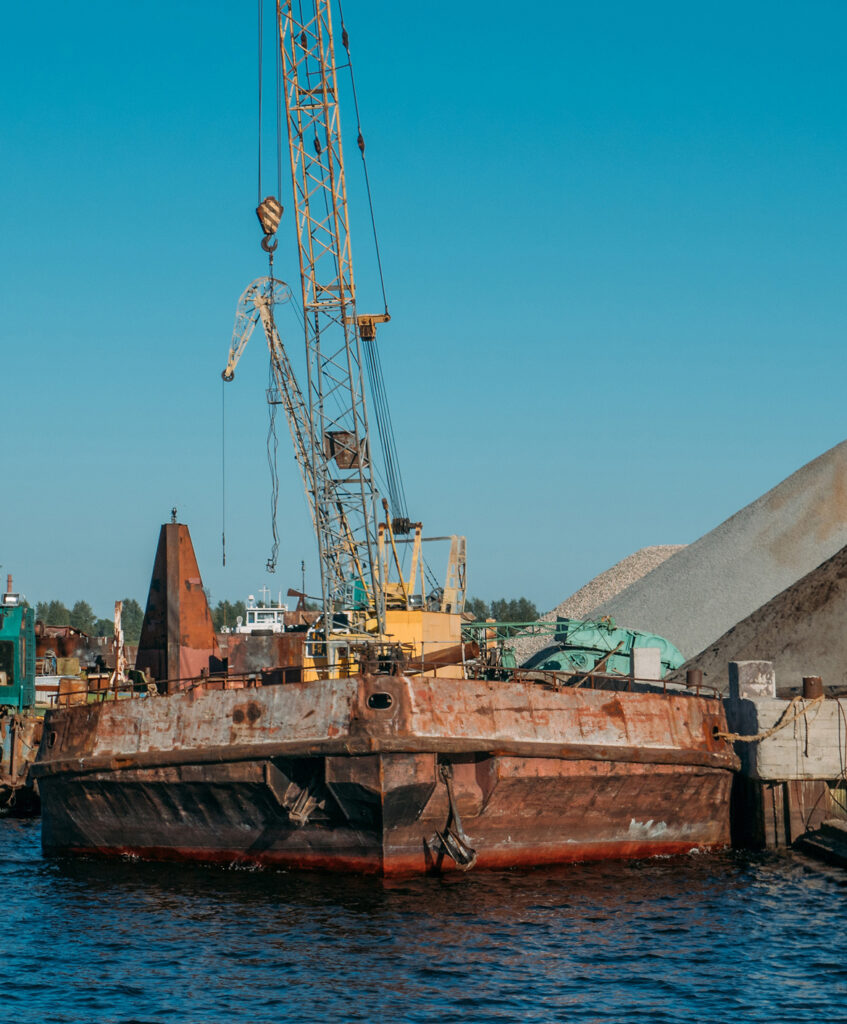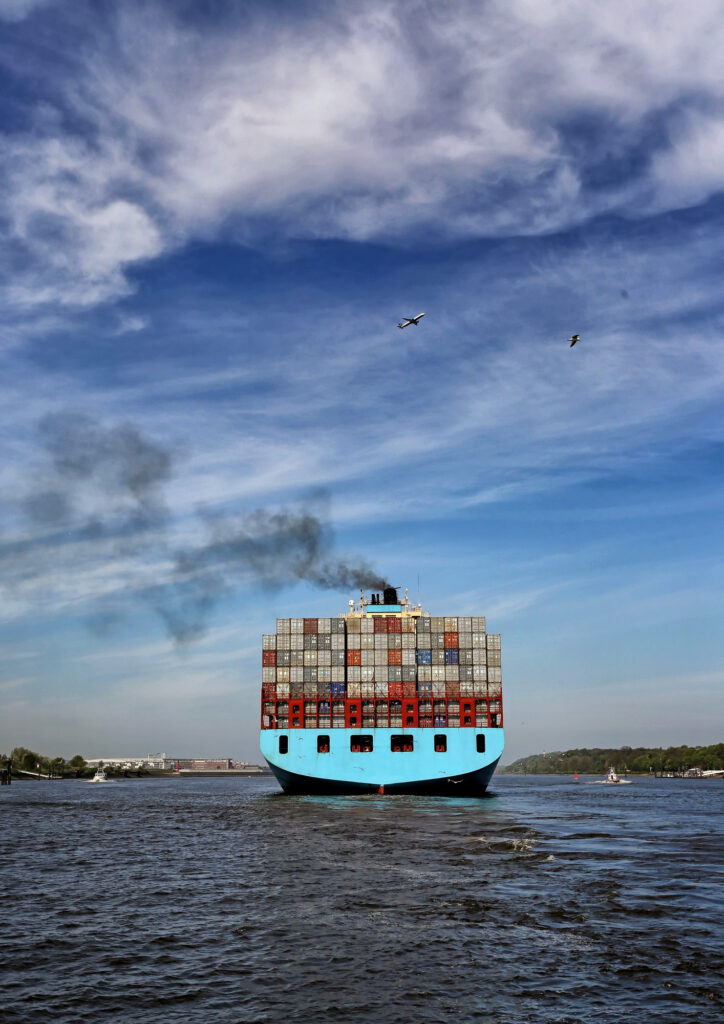Nations depend on port administrations for protection
By Rawle Baddaloo*
2019, July 1: Ships can make or break a port. A sub-standard ship carrying dangerous or volatile cargo could tragically destroy a port and the entire city on its periphery. Port managers must therefore be keenly aware of (a) the type of and (b) condition of the ships utilizing the facility.

The task of protecting the port from sub-standard ships may not be the port manager’s direct responsibility (depending on the jurisdiction). But, it was for this precise reason that Port State Control was established.
Let us look at the origins of Port State Control.
In 1978 the Amoco Cadiz grounded in France and it was disastrous. This spurred the European Maritime Authorities to reach an agreement. A memorandum of understanding (MOU) was signed so as to develop a harmonized system to inspect foreign ships using their ports for defects and deficiencies. This Agreement was signed in 1982 by the Maritime Administrations of 12 nations. It was called the Paris Memorandum of Understanding.
It was decided by these nations that 25% of all ships visiting their ports would be inspected.
Matters of significance out of the Paris MOU were: harmonized inspection procedures; centralized recording of inspections; sharing of information; and, tracking of ship movements.
The purpose of the ship inspections was in congruence with the International Maritime Organization’s position on Port State Control. This was and still is “…the Inspection of foreign ships in National Ports to verify that the condition of the ship and its equipment complies with the requirements of International Regulations and that the ship is manned and operated in compliance with these Rules”.
The signing of the Paris MOU was significant and, in a few years, similar pacts were signed all over the world. These included:
- Tokyo MOU
- United States Coast Guard
- Vina Del mar (Latin America)
- Caribbean MOU
- Mediterranean MOU
- Indian Ocean MOU and
- West and Central African MOU
- Black Sea MOU and
- Ryadh MOU.
These various memoranda basically adhered to the intent and purpose of the original Paris MOU.
The Caribbean MOU (CMOU) was signed in February 1996 in Barbados. Nine Caribbean nations signed on. (I am specific here in saying nations rather than Maritime Administrations as was done in Europe. The signing of the Caribbean MOU marked a successful culmination of years of intra-regional discussions, research and invaluable assistance from the International Maritime Organization (IMO). The lead person was Capt. Barrie Rial (deceased), then Regional Maritime Advisor.
While generally following the intent and purpose of the Paris MOU, there were some specifics that are worth mentioning. The Caribbean MOU signatories agreed that 15% of vessels would be inspected and its purpose was “… to eliminate the operation of substandard ships in the Region through a harmonized system of Port State Control”. The signatories now number 18, including: Antigua and Barbuda, Aruba, the Bahamas, Barbados, Bermuda, Belize, The Cayman Islands, Cuba, Curaçao, Grenada, France, Jamaica, The Netherlands, St Christopher and Nevis, Saint Lucia, Suriname and Trinidad. Associate— St. Vincent and the Grenadines. Observers are Anguilla, the British Virgin Islands, Dominica, St. Maarten, and the Turks and Caicos Islands.
Caribbean focus
The training and focus in the Caribbean area are on smaller vessels, less that 500gt. As such two small-vessel Codes have been developed specifically for the Region so as to regulate ships under 500gt. All vessels under 500gt operating in the Caribbean Trading Area fall under one of these two codes:
* Code of Safety for Small Commercial vessels (SCV)
* Code of Safety for Caribbean Cargo Ship (CCCS)
The Caribbean Trading Area encompasses all of the Caribbean Sea, the Gulf of Mexico and the Atlantic Ocean up to the shores of French Guiana.
In order to effectively deliver Port State Control, there has been on-going regional training of ship Inspectors. The first of these Training initiatives, the Caribbean Ship Inspector Training (CASIT), was launched in Trinidad and Tobago in 1996. From time to time a Concentrated Inspection Campaign (CIC) is also presented. This sometimes will run for a few months and concentrate on one or two Conventions.
While the focus has been on vessels under 500gt, the Technical Standing Working Group proposed to the CMOU, inter alia, a revised Targeting Matrix for vessels over 500gt. This has been approved a few years ago and the process is continuing.

Guided
The objectives stipulated in the MOUs are guided by the following IMO and ILO Conventions:
- Safety of Life at Sea (SOLAS)
- Marine Pollution (MARPOL)
- Standards of Training, Certification and Watch Keeping (STCW)
- Loadline (LL PROT 88)
- International Regulations for Preventing Collisions at Sea, 1972 (COLREG 72)
- Merchant Shipping Minimum standards (ILO 147)
- Tonnage Measurement of Ships (TONNAGE69)
- Harmful Anti Fouling Systems (AFS2001)
- Civil Liability for Oil Pollution Damage, 1969 (CLC69)
- Civil Liability for Bunker Oil Pollution Damage 2001(Bunkers 2001)
- Control and Management of Ships Ballast Water and Sediments, 2004 (BWM Convention)
- The Maritime Labour Convention 2006.
All of the above conventions include various Annexes, Amendments and Protocols.
When one considers that of 10,000 vessel movements taking place in the Caribbean region only about 700 inspections take place the target of 15% is clearly not being met.
What can be done to meet the 15% target set in the Caribbean MOU?
A solution
If we take a step back into the past and look at the Port of Point Lisas (in south Trinidad) we may find a solution. I was fortunate to be one of the pioneers at Point Lisas. It was my mandate, inter alia, to set up Rules and Regulations. This was in 1979.
Port State Control and MOUs were not en vogue as yet but, in the Rules and Regulations of the Port (which I penned), it was clear that all Users must comply as a condition of use. This involved an inspection of the Ship’s Certificates. If anything was amiss or there were omissions the vessel was promptly reported to the Classification Society. This was in the pre-MOU days. In the post MOU days it was reported to the Maritime Services Division as Trinidad and Tobago did not (and still does not yet) have a Maritime Authority.
No sub-standard vessels
 It is incumbent on a port manager to ensure that sub-standard vessels do not use the Port.
It is incumbent on a port manager to ensure that sub-standard vessels do not use the Port.
We in the Caribbean region fought for and got the United Nations to declare the Caribbean Sea a Protected Area. We must stop substandard vessels from using or traversing our area.
Every vessel using a port should be boarded by port officials. I am not referring here to personnel from statutory bodies, Customs and others doing their job. The Port manager or his staff must board to discuss cargo operations. This is the ideal time to examine certificates using the MOU protocols as a guideline. Any omissions can be reported to the State’s Maritime Authority for action.
It is a fact that there are not sufficient Inspectors. This is even more a problem in specialized ports ‑ be it petrochemical, petroleum, passengers, containers or bulk – where Port Management is often better versed on the requirements than the Ship Inspectors. The Caribbean MOU regularly offers training. However, a joint approach between Port managers and their Maritime Authorities is necessary and authority must be signed over so as to give the Port manager the Legal clout to operate.
An alternative here is that the port manager does the Inspection (as a routine part of his boarding operations) and then reports to the Maritime Authority his findings. The Maritime Authority can then act if necessary to take the harsh decision of Ship Detention etc. This requires serious coordination as, depending on the severity of the case, cargo should not be loaded on the vessel. It follows also questions of berth occupancy, removal of vessel, guarding at the anchorage etc.
Pivotal to all of this is the legal framework in the country and the accession and full implementation of the pertinent Conventions by the country.
It is clearly stated that a country cannot take action on a vessel if it (the country) is not compliant with the pertinent Convention.
What lies ahead?
The non-compliance has caused the North American Marine Environment Protection Association (NAMEPA) to be formed. The Caribbean counterpart (CARIBMEPA) is now being established.
At the recent meeting in Montego Bay the Regional Ministers attending passed the motion to establish CARIBMEPA. The main reason for this is because the lack of proper implementation in the Region. The membership will encompass all the regional organizations involved in the management and maintenance of a pristine environment.
Marine Technology Cooperation Centres (MTCC) have been established. There are two in the Region, one in Panama and the other in Trinidad. The objectives include: “To promote the use of Energy Efficient Technologies.”
These regional bodies are still involved in collecting and collating data on ships, bunkers etc. These bodies cannot regulate and in fact are fulfilling the MARPOL Annex VI mandates.
Over the years the IMO has passed numerous Conventions and, like MARPOL, the full implementation is lacking. Indeed the new IMO mandate set by the new Secretary General Kitack Lim, is aiming at accelerating action on sub-standard vessels and non-compliant flags.
IMO 2020 is just around the corner. In fact, January 1, 2020 will see the commencement of the new regulations on bunkers. This is the start of Non Decarbonisation Strategies (NDS).

Scrubbers
Vessels must now burn bunkers that emit less than 0.5% sulphur. Because of the greater expense in purchasing low sulphur fuel, scrubbers are being introduced to clean up the emissions before it is vented.
Scrubbers are of basically two designs, Open and Closed. The open type pumps the waste water back into the sea and is banned in many countries. My understanding is, that notwithstanding many countries in the region are supporting Open Loop Scrubbers.
There is a large amount of info available on the rationale for putting IMO 2020 in place and the pros and cons of scrubbers, bio fuels and other clean fuels as well as battery power. Suffice it to say the already-overloaded Ship Inspectors now have even more to do. Port managers must ensure that the air and water in the Ports under their control must be kept in pristine condition.
Port State Control is not and cannot be the responsibility of port management. It is clearly stated in the MOU and related documents that this responsibility lies in the hands of the Maritime Administrations. What is being recommended is that port managers assist the Maritime Administrations by offering their services to fill the gap created by non-inspection.
At first glance taking this on may seem to be a huge and time consuming responsibility. However we should follow the mandates of the MOU which stipulate that once in six months a vessel is inspected unless the vessel develops deficiencies in which case more frequent inspections may become necessary.

* Capt. Rawle Baddaloo, Past President of the Caribbean Shipping Association, formerly served as the CSA General Council’s ‘point man’ on Port State Control.





